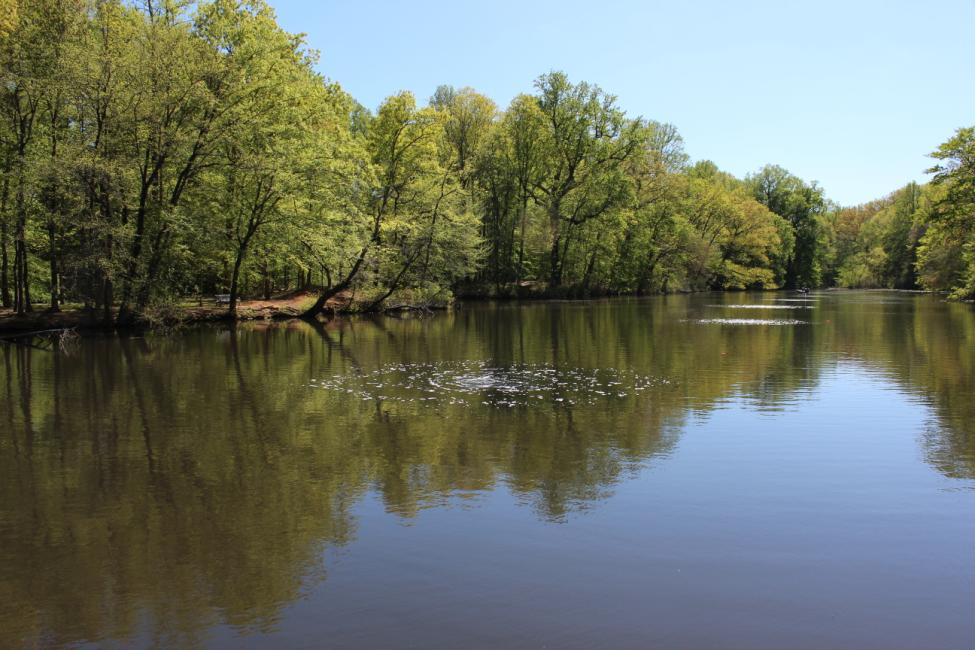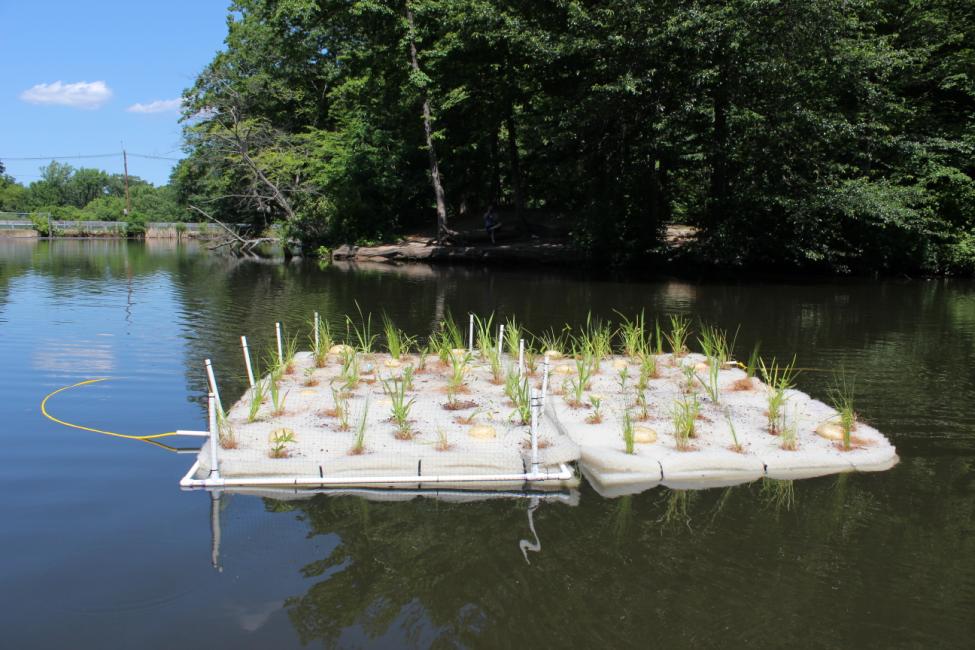| New Jersey Section of American Water Resources Association (NJ-AWRA) |
The New Jersey Section of the American Water Resources Association (NJ-AWRA) |
By Mike Haberland, Rutgers Cooperative Extension & Craig McGee, Camden County Soil Conservation District
In eutrophic lakes and ponds, conditions of warm, calm water, with elevated nutrients, can cause photosynthetic blue-green algae (cyanobacteria) to increase dramatically. These “blooms” may be visible as floating scum that resembles blue, green or even red paint on the surface of the water. Blue-green algae can spoil water quality producing pungent odors or a thick scum, affecting recreational use, reducing oxygen levels, as well as impacting other plants and animals in the water. When these cyanobacteria respire they use oxygen that can alter the balance of the ecosystem to the point of causing fish kills. Decomposition of the bloom also consumes oxygen in the pond. In addition, some species produce toxins that can cause illness in humans, pets or livestock.
Through the first summer of installation the pond water column is mixing well, with DO levels only 0.5ppm difference from surface to bottom; zooplankton have had an explosive population growth which will benefit the fishery; and Hopkins Pond did not experienced a bloom until the end of August, unlike the next pond downstream which experienced blooms all summer long.

Fig. 1 Hopkins Pond with aeration diffusers operating.

Fig. 2 Planting native plants into artificial floating wetland filter material.

Fig. 3 Artificial floating wetland anchored in pond to reduce nutrients.
